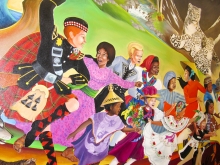‘The Culture of Peace’
Foreword: The Culture of Peace
H.E. Ambassador Anwarul K. Chowdhury
(pp. xiii-xx)
At the level of the individual, early childhood provides a unique opportunity to address issues that would contribute to transform the culture of war to a culture of peace. Different types of programs or interventions are needed to support this, particularly those which would provide appropriate educational curricula. The events that a child experiences early in life, the education that this child receives, and the community activities and sociocultural mind-set in which a child is immersed all contribute to how values, attitudes, traditions, modes of behavior, and ways of life develop. Early childhood affords a window of opportunity to instill the rudiments that each individual needs to become an agent of peace and nonviolence.
For more information on this foreword, please visit our resource library.
Foreword excerpt reprinted courtesy of the MIT Press.
Reference
James F. Leckman, Catherine Panter-Brick, and Rima Salah (eds.), Pathways to Peace: The Transformative Power of Children and Families, © 2014 Massachusetts Institute of Technology and the Frankfurt Institute for Advanced Studies.
Links
Topics & initiatives
|
|
JOIN THE CONVERSATION
For breaking news and to stay connected, follow us on social media. Sign up to get our E-News delivered straight to your inbox.



